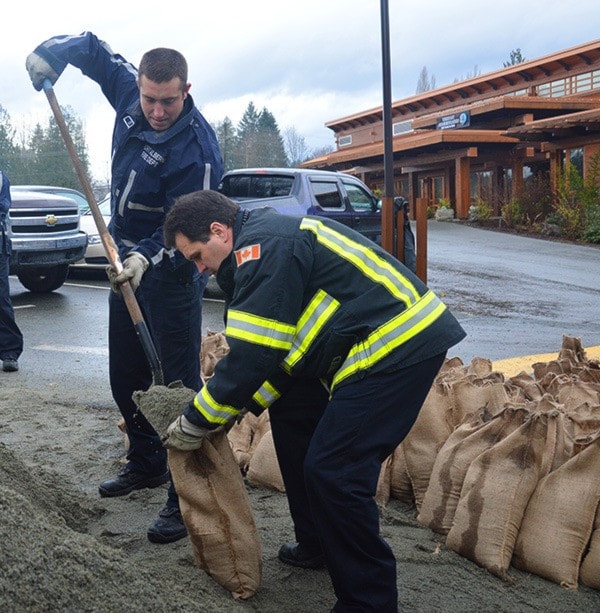The Alberni Valley missed the worst of the expected Monday night storm, said Tseshaht elected Chief Councillor Hugh Braker.
“The storm went north last night and the rain we got was half of the expected rain,” said Braker on Tuesday afternoon. He had declared a state of emergency for the Tseshaht First Nation on Sunday afternoon and called for volunteers to fill sandbags in anticipation of flooding along the Somass River.
The Somass on Tuesday was downgraded from a flood watch to a high stream flow advisory by the province.
Levels in the Ash and Sproat rivers have fallen and snow on the mountains is no longer melting.
“The snow is not melting because the storm went north and so the snow elevation didn’t go as high as we thought it would,” said Braker.
“So there’s less snow, there’s less rain, the rivers are falling—everything’s good.”
However, it’s not all clear skies ahead.
“The projection from Environment Canada is that we’ll keep up with the rain cycle and the warmer weather until at least Dec. 17 and that will bring us up to the king tide season for this year,” said Braker.
That means that the Tseshaht will keep all of their preparations in place until the storms have passed.
“We’ll keep all the sandbags in place around the homes,” said Braker, adding that the Somass River has broken its banks in some areas along Hector Road.
“The river has spilled over its banks and it’s in some people’s backyards on our reserves.”
If another big storm hits the Valley, Braker said, all of those sandbags will be even more necessary. Conscious of the devastation wreaked by last December’s floods, the Tseshaht started their preparations early.
“We started sandbagging Sunday at noon and continued with the sandbagging yesterday and the plan was to continue today, but the plan was discontinued after the flood watch was lifted,” said Braker.
Much like last year, Braker said he was overwhelmed by the support the Tseshaht received.
“We were overwhelmed by the support we got from the community. We had approximately 30 people show up yesterday, another 10 people who assisted in the emergency operations centre and about six people who were driving trucks and bringing sandbags to homes.”
But while sandbags can help the Tseshaht weather the now expected winter storms, Braker said that council is looking for a more long-term solution.
“Last year was at least the biggest flood in 60 years or more,” said Braker.
“We’ll have to look at where we authorize building and whether or not we can take any other mitigation in regards to the homes that are already along the river.”
The Tseshaht reserve has homes at Hector Road that suffered heavily in last year’s flooding.
“The river has a choke point at the [Orange] Bridge and that chokepoint has the effect of backing along the water exactly to where the people live.”
Tseshaht council will consider the issue in the new year.
“I don’t know what the answer is to that. We’ll have to talk to a hydrologist and people who specialize in flood control and see what can be done,” he said.
“If not dikes, perhaps we could put berms around them and try to divert some of the water.”
reporter@albernivalleynews.com
twitter.com/AlberniNews
